The moment digital photography became accessible to the greater population without significant barriers to entry, film became a luxury good.
I do not mean that film photography entered the same plane of inaccessibility as the Rolex or the Bentley (although there are film camera makers in those echelons to be sure). I simply mean that, for the vast majority of working professionals, photographing on film was no longer a requirement to put food on the table.
I underline this transition chiefly for this reason: once film became a choice, and not an absolute necessity, it entered the economics of emotion. This applies both to the hobbyist and the professional. We see this in the wedding industry with “hybrid” shooters offering medium format film in their wedding packages. Are they offering film alongside digital because it has higher resolution? Because it is a cheaper, easier workflow? Of course not. They are offering it chiefly because it differentiates their brand in an over saturated wedding market, because it has that “look” and because their clients have the desire to say that their wedding was shot on film.
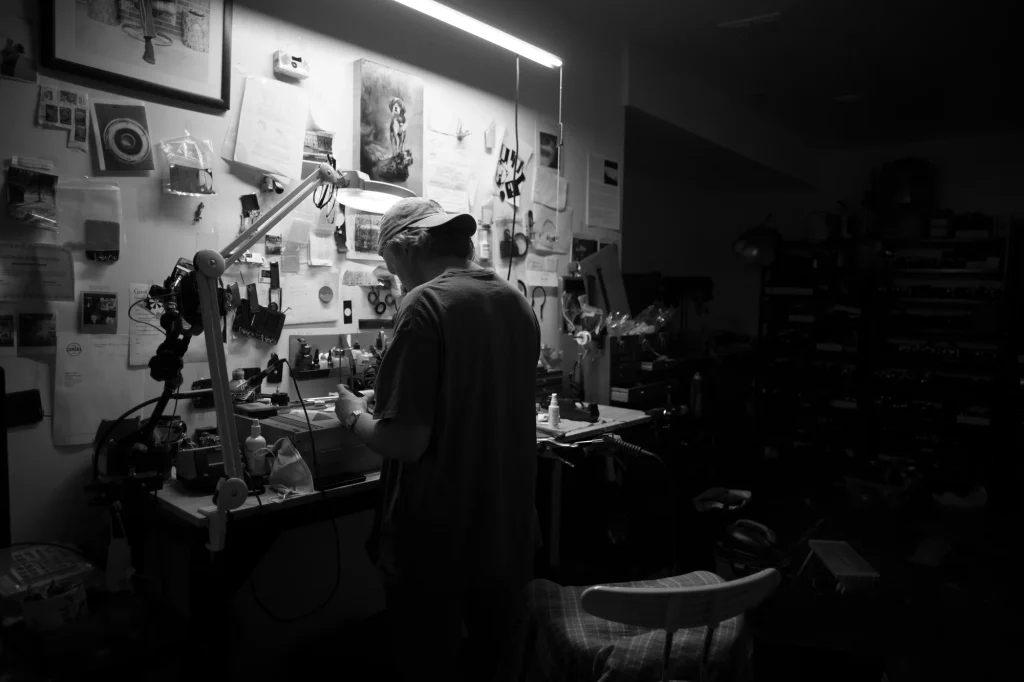
Before the film devotees jump all over me, let me say clearly: I love film. It offers a latitude in light rendition and texture that digital still struggles to emulate, that we still struggle to describe. But that is my point precisely; it is chosen for reasons that fall squarely into the territory of subjectivity and emotion. This is what makes the movement back to film unique among many today. In a world obsessed with speed, progress, efficiency and advancement, it bears examination when a very large group of people decides to choose to do things the “slow way.” Let’s consider a few examples.
In the consumer market, disposable cameras are hot in college towns across America. Students are taking them to parties because they love the look of the on-camera flash, the well exposed, smiling faces with the heavy vignette and the dark background of partygoers fading into oblivion. They love the novelty of the silly plastic toy that you must wind between shots that reminds them of when they were camping in the Adirondacks with their family as a seven year old.
These same novelties apply to the students and young folks who come back to the camera shop and ask “do you have anything that takes similar pictures but I don’t have to throw away?”
Enter the Olympus Stylus, the Nikon L35AF, the Canon AF35ML etc. These cute, clumsy little machines that bring us back to an earlier time, produce pictures that were taken last week but look 20 years old. The point and shoot market is an economy of nostalgia, propped up by eager young folks seeking to capture their twenties in the same visual style they’ve seen in their childhood photo albums growing up.
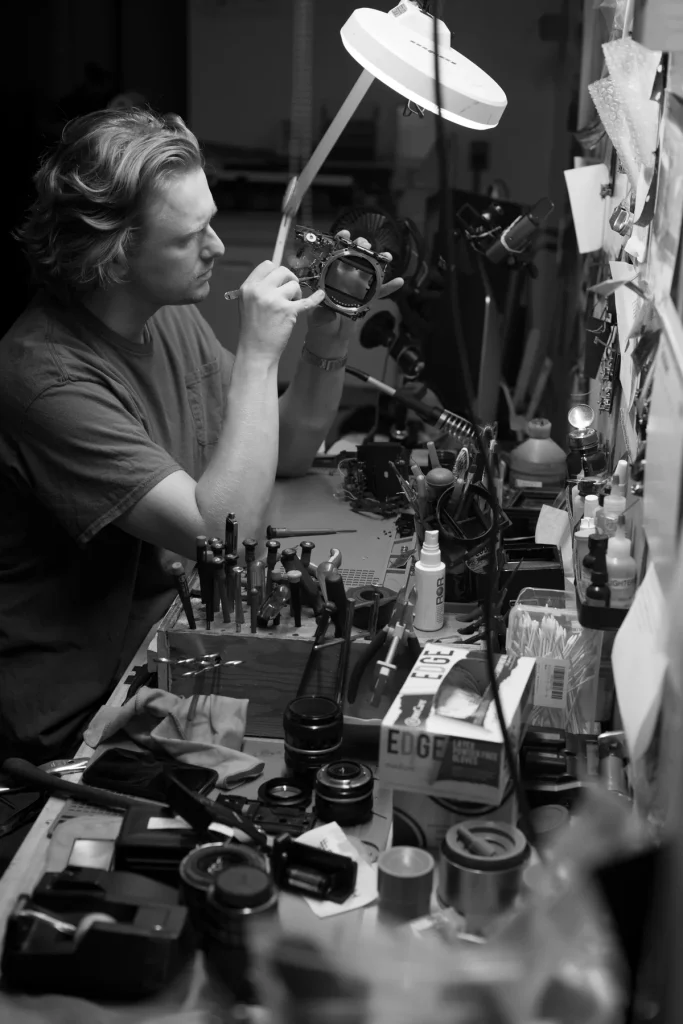
A deeper reason young folks are turning to film, especially in the social setting, is the healthier experience it promotes during its use. The overwhelming majority of young folks looking to buy point and shoots or disposable cameras grew up as digital natives. They either have never interacted with an imaging device that doesn’t instantly produce the photograph on a screen, or film cameras are a very distant memory to those in their mid to late twenties. Because of this, the novelty of the film camera presents a way to capture an important moment or experience, while severing the chain between that present moment and the screen that shows it to you for review. In short, you take the picture, and you move on.
The film camera in the social setting combats the classic question that we are grappling with these days: if you go somewhere or do something, and you are on your phone capturing it the whole time, reviewing the images, posting them to social media, rinse and repeat, were you really there at all? Film provides a work around.
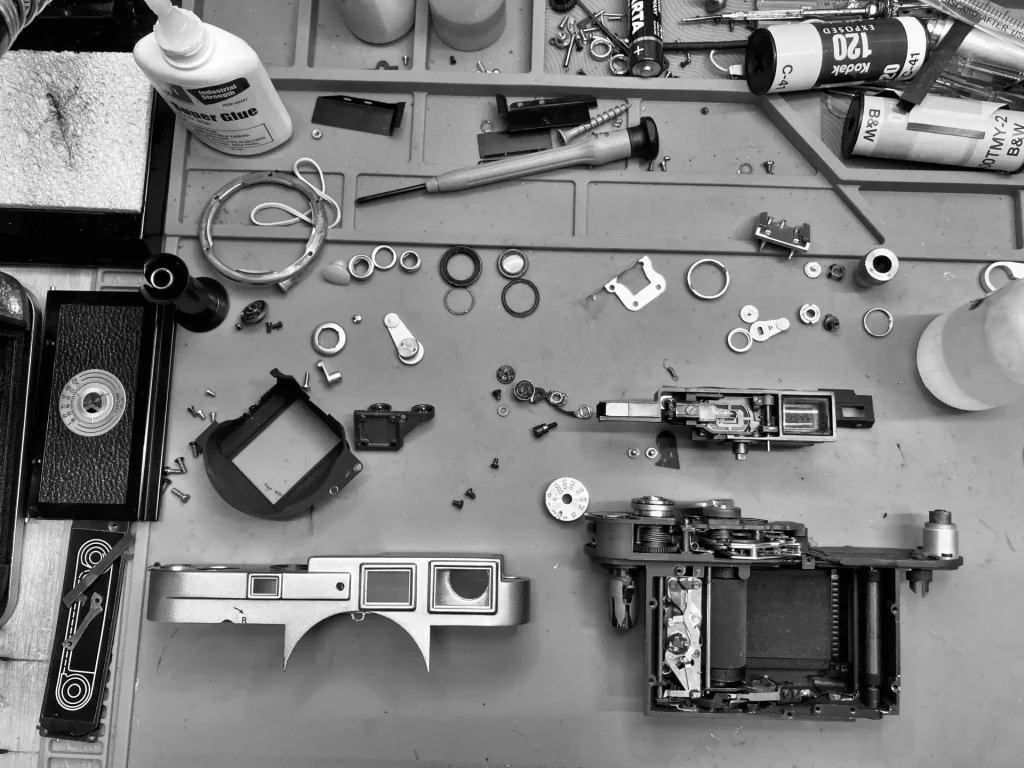
And then the magic happens. You clutch that camera, or roll of film and protect those memories greedily until you can take it to your local camera shop or ship it off. Perhaps the event fades in your mind, perhaps you dream about it or discuss it with peers, analyzing the social dynamics and events of the weekend. And then a week or two later, those moments are back in front of you, in prints or digital scans in stark relief. Those moments were able to live in your memory and accrue the true meaning and mediation that only occurs in human memory. So when you look at them again, with the passage of time between, they are richer photographs than if you saw them within the same 30 seconds they were created.
This is a brief and oversimplified description of what I describe as the “young” half of the consumer film market.
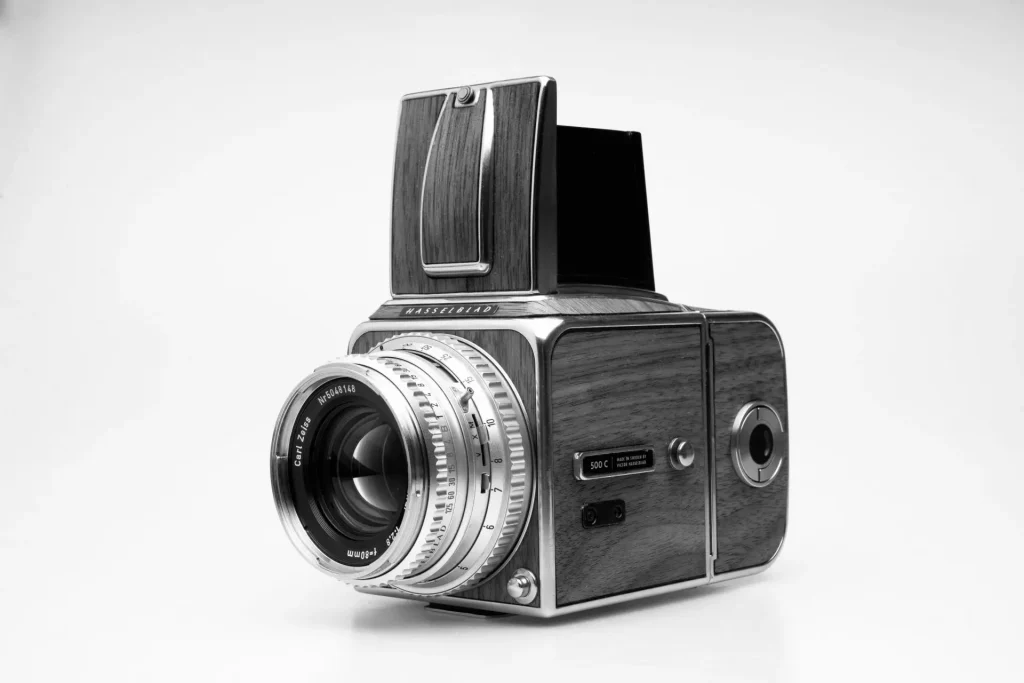
At the very same time that these youngsters are picking up film, there is a strong contingent of the market coming back to film. They could be working professionals who are bringing it back into their workflow, or lifelong hobbyists who switched to digital and are invigorating their creative process with a beloved medium.
I believe many older folks are returning to film for the same reason the young folks are: nostalgia. While the young folks are simulating their nostalgia for moments that are usually merely weeks or months in the past, the older folks (the Old Guard I will call them) are picking up cameras that they used in high school 45 years ago. Or perhaps they are picking up a Nikon F that they bought in Korea or Vietnam. These objects, to them, do not represent the novelty they do to the youngsters, rather they represent a familiarity, a time when things were very, very different.
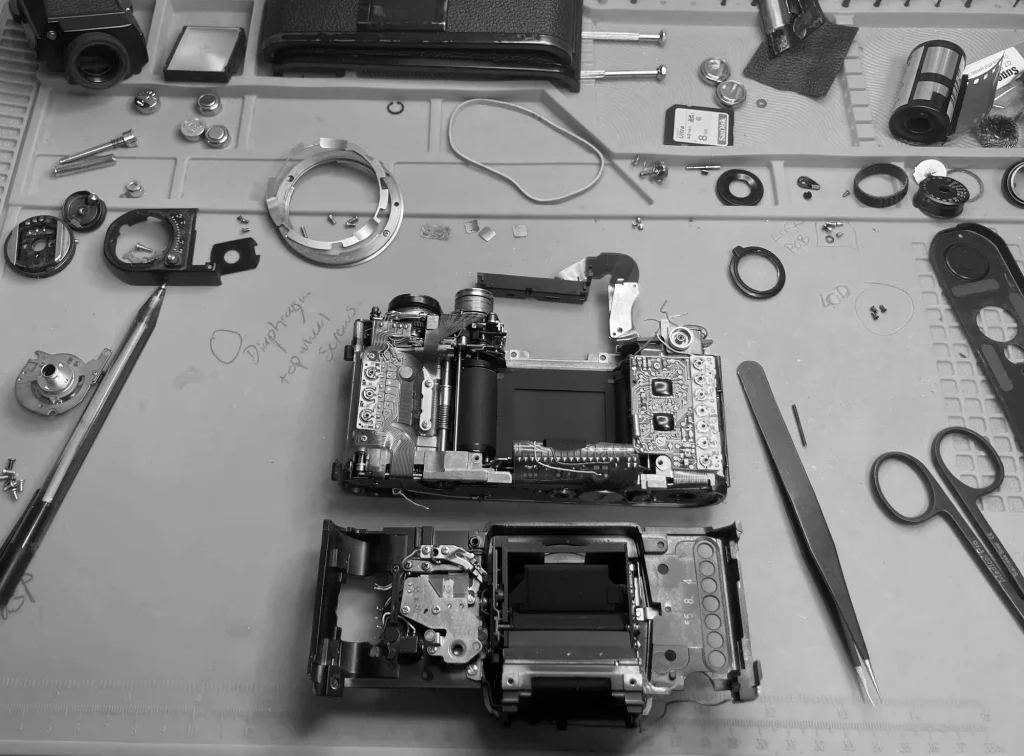
My father spoke for a number of years about his old Nikon F2A that he sold in 2003 to help finance his first digital Nikon. He would lament its sturdy construction, the “clunk” of its heavy advance stroke and spry mirror movement, the assignments he shot with it in his first journalism job he had during college.
For his 60th birthday I repaired and built him a chrome F2A with a Nikkor 50/1.4. It was the first time I saw him cry in many years.
I was not just giving him a camera, I was giving him a direct link to an earlier time in his life.
Why have I come to film? Why am I building a career around camera repair and restoration?
I fell in love with these objects because, put simply, they are a fascinating testimony to the most fundamental aspect of human nature.
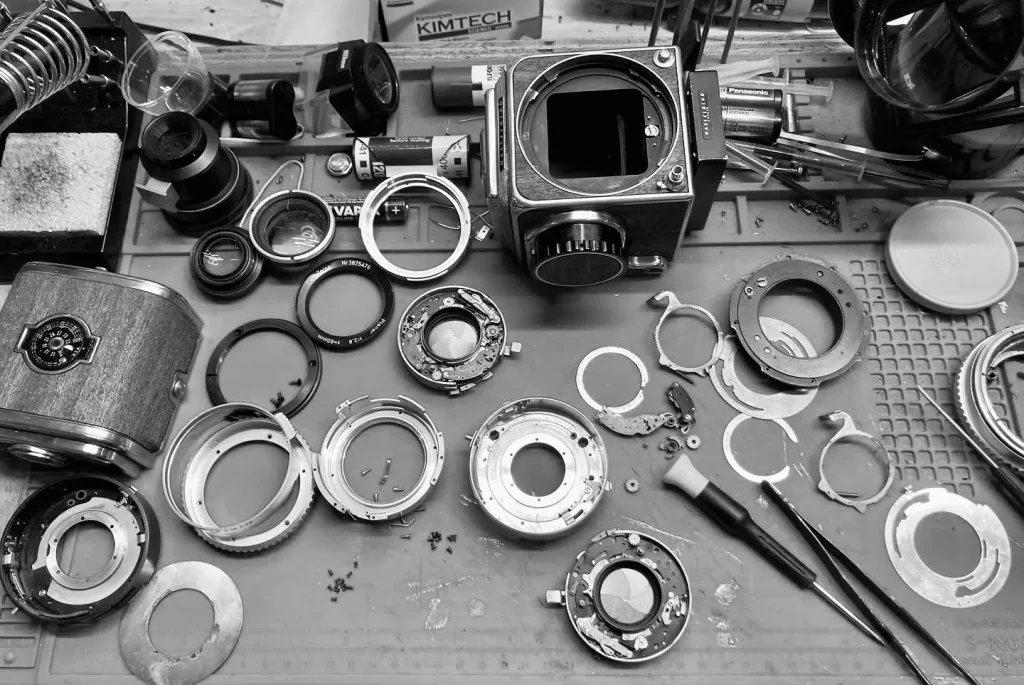
We are (to our knowledge of course) one of the only species that can consciously conceive of the passage of time on the scale that we do. So much of what we do is driven by this existential acknowledgement that in time we will no longer be here. Couple that with the fact that we are intensely visual animals, preoccupied with the task of capturing all that is meaningful to us so that we can look back at it, or, leave a record of it for those who come after us. Susan Sontag described photos as memento mori, reminders of what no longer is. Roland Barthes similarly believed the essence of every photograph is its representation of a moment that will never exist again. To both these writers, “to photograph was to participate in one’s own mortality.”
There are, in my mind, few other more human pursuits than photography.
And this is why I repair.
Every camera is a historical landmark in human achievement, visual culture, advancement in engineering, optics and creative thought throughout the past two hundred years.
From early wet plate field photography, through press cameras, twin lens reflexes, medium format SLRs and compact, sleek 35mm rangefinders, a prevailing narrative remains. We will stop at nothing to achieve creative and ingenious solutions to our most human instinct to memorialize.
Different eras in technology and culture produced different approaches to this task and that makes camera repair so interesting. A German approach to the camera is different from a Japanese, a Swedish, an American, and so on. These cameras tell a story of our recent history, on a macro and a micro scale.
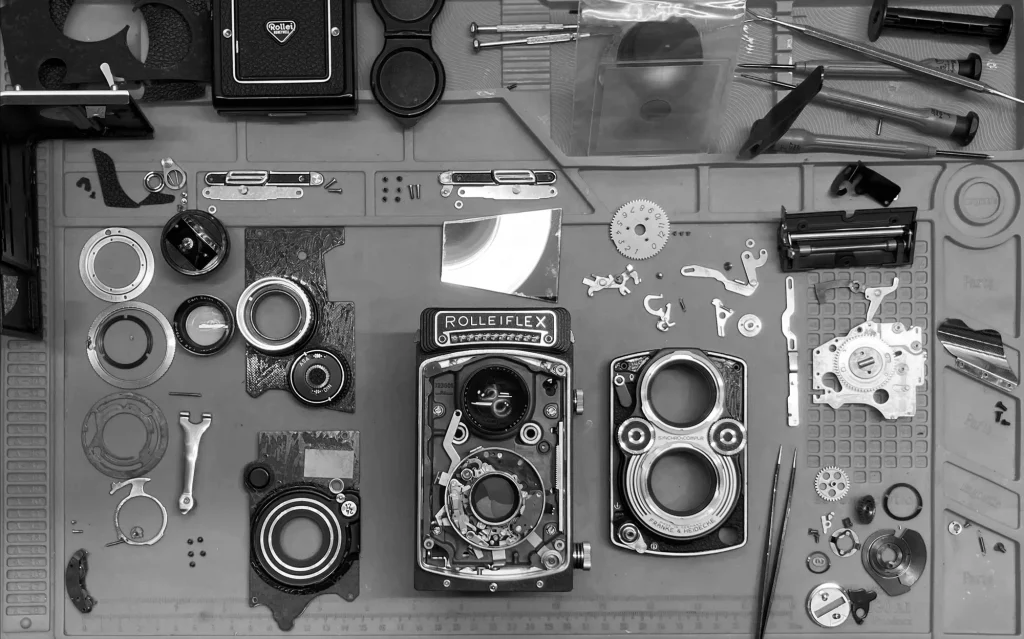
With each camera comes an individual biography. I’m reminded of this when people come to me and say “my father bought this Rolleiflex in Germany while he was stationed there,” or “I photographed my husband on this camera on our first date 50 years ago.” Sometimes they are more somber situations; “these disposable cameras may have the last photos of my daughter taken before she died.”
I repair cameras because it balances me. It holds me accountable to those who cherish the camera. It provides me with a community and a sense that I am contributing to something greater than myself by keeping these cameras alive. When I repair a camera I feel I am participating most directly in this human project of documentation, ingenuity and culture. That camera can continue on to make more important memories for its current and future owners and with any luck, outlive me.
We all come to photography for different reasons.
But what we all have in common is this innate desire to preserve.
The irony is, the cameras we use to document the passage of time will ultimately outlive us.
We are all stewards and the cameras are the passengers
We humans get to spend a brief period with them, but ultimately they will never be “ours” in the individual sense. It is our responsibility to take care of them while we have them and to keep them working for those we pass them to.
The reality is that there is an excess of buying power in the form of you, the consumer, and a scarcity of knowledge and expertise in repair personnel to keep them alive. This country’s best and brightest repair technicians are passing on regularly and taking their knowledge with them. It is my goal to ultimately train technicians to help in this project to keep these cameras alive, because I know I can’t do it alone. There are very few of us left, even fewer whipper snappers like myself.
I operate under the principle that all cameras deserve the same care and attention, from the cheaper consumer cameras to the high-end professional rigs. A catch-all approach like this is essential to keeping a diversity of cameras alive. That being said, I am frequently doing many different cameras all the time and my back log is long because there isn’t much I will say no to fixing.
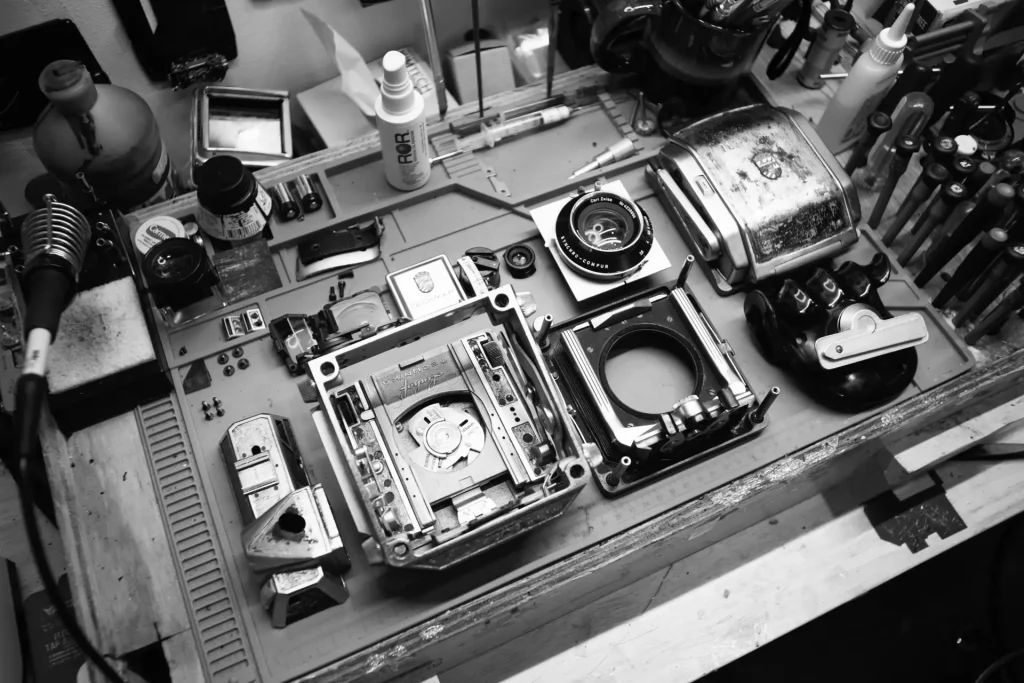
The below jobs represent about 25% of what I do in a month
- Olympus 35RC Leaf shutter rebuild
- Leica M4 curtain replacements
- Rolleiflex 2.8F CLA
- Nikon FM2 shutter replacement
- Nikkor 55/2.8 Micro
- Contax 645 shutter replacement
- Horizon 35mm Pano CLA
- Pentax 6×7 curtain calibration
- Minolta x700 transport repair
- Linhof 220 CLA
- Bronica ETRS CLA
You can see the breadth of cameras I work on from Australia, to the United Kingdom, to California to Canada, to right here in my hometown of Charlottesville, Virginia.
Until I can train more technicians, the wait times are going to be long, I won’t lie to you. I am going to need your patience and understanding of this fact. I need your recognition that we are on the same team, working towards the same goal; a future where these incredible cameras and those who use them aren’t merely novelties but part of a vibrant and sustainable community that our grandchildren’s children can be a part of.
This mutual relationship is the only path forward. It is the only thing that makes sense. If we do right by the cameras, and one another, these cameras will outlive us for many years to come. This is our project.
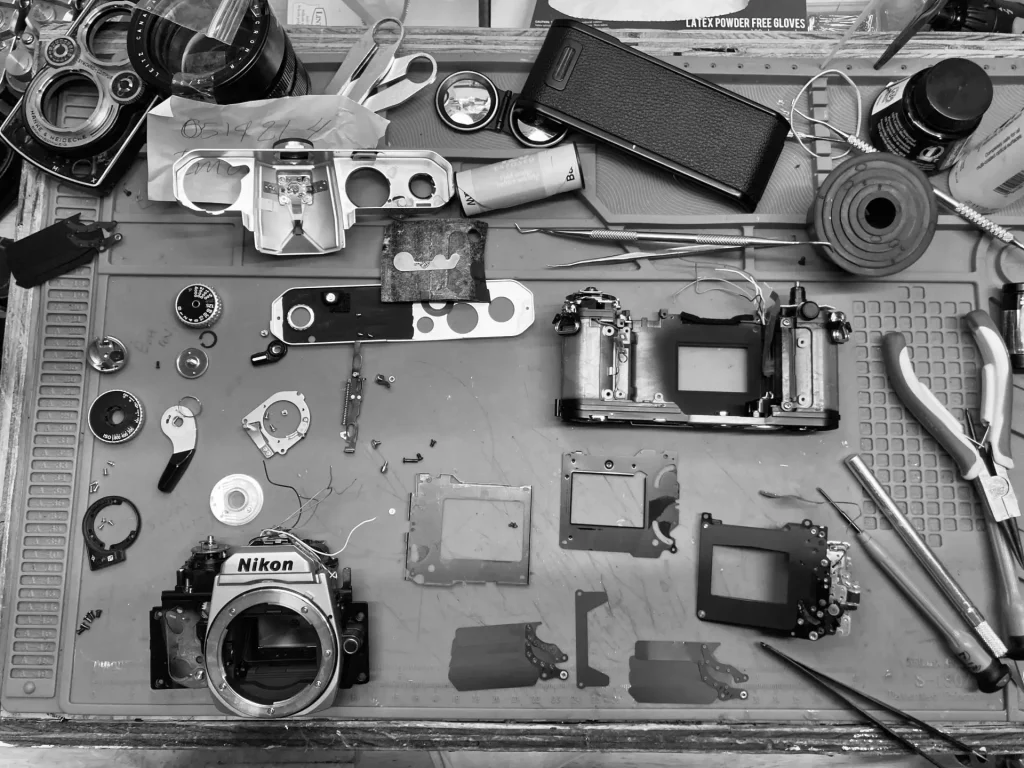
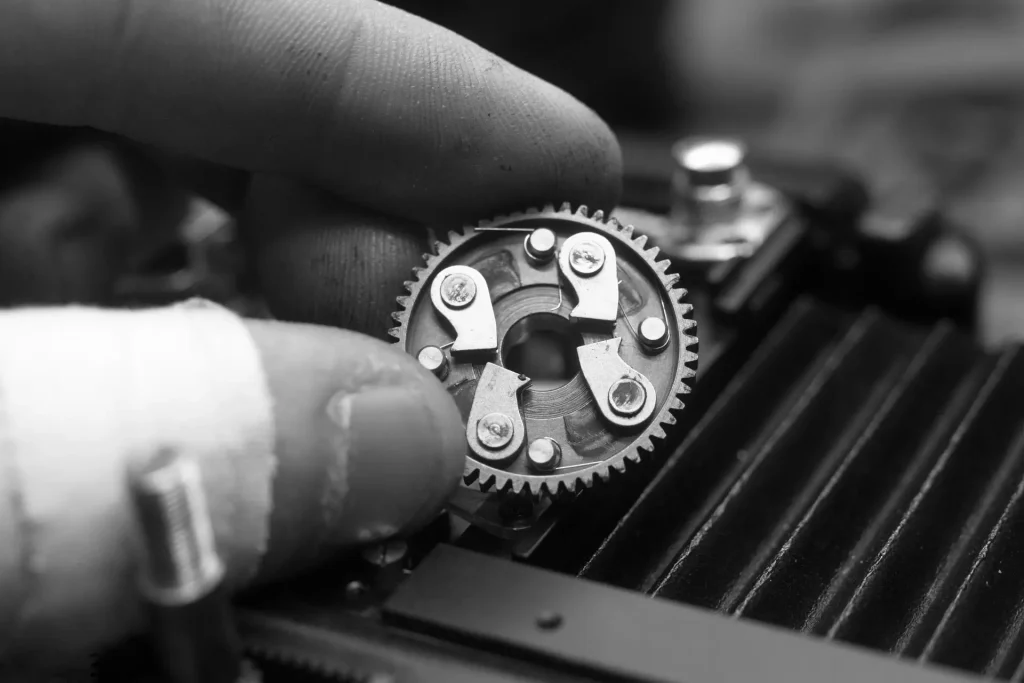
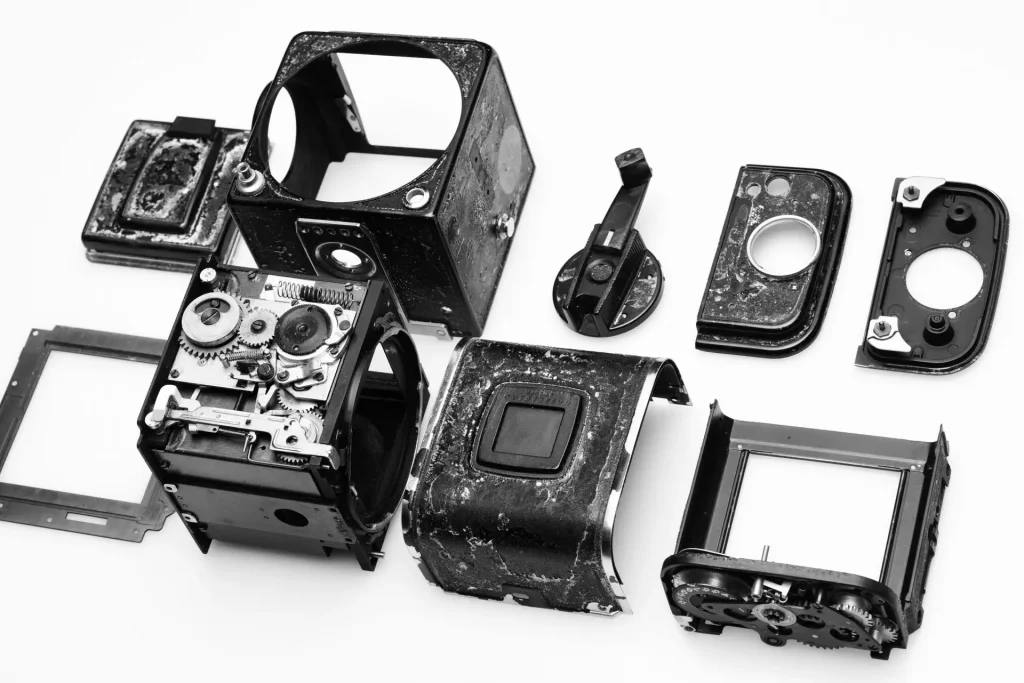
Thanks for taking the time to read my article! My name is Ryan Jones and I am pursuing a career in camera repair. If you would like to support my camera repair and retail business or are interested in learning more about the work I do please visit my website, or check out my instagram!
Share this post:
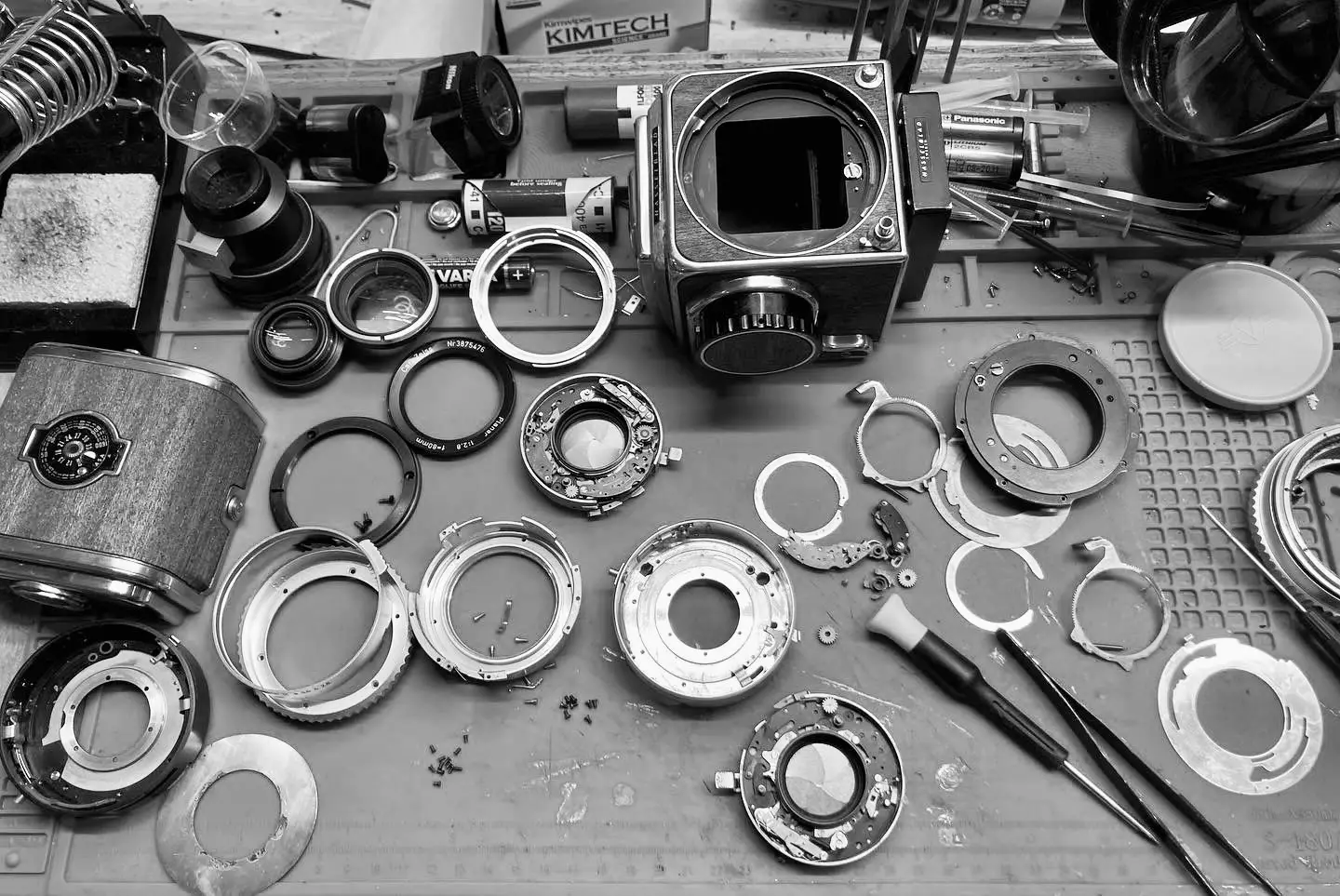








Comments
thorsten on The Case for Patience – Film Photography and Camera Repair – By Ryan Jones
Comment posted: 20/04/2022
Steve Curzon on The Case for Patience – Film Photography and Camera Repair – By Ryan Jones
Comment posted: 20/04/2022
Bill Brown on The Case for Patience – Film Photography and Camera Repair – By Ryan Jones
Comment posted: 20/04/2022
I am one of the last of my kind in my field of photography which is retouching, repairing, and restoring of original prints. I have been unable to find anyone to pass my 46 years of hands on knowledge and experience to but that hasn't slowed me down in my passion to help preserve family photo histories. I have encountered some of the same emotional responses as I return a photo to the present generation and help it live on at least another 100 years. Cameras and prints will always be linked together in the story of film . My hat is off to you for your dedication to help film photography survive to future generations.
Comment posted: 20/04/2022
Malcolm Myers on The Case for Patience – Film Photography and Camera Repair – By Ryan Jones
Comment posted: 20/04/2022
Comment posted: 20/04/2022
Comment posted: 20/04/2022
Comment posted: 20/04/2022
Malcolm Myers on The Case for Patience – Film Photography and Camera Repair – By Ryan Jones
Comment posted: 20/04/2022
Comment posted: 20/04/2022
Danny on The Case for Patience – Film Photography and Camera Repair – By Ryan Jones
Comment posted: 20/04/2022
Comment posted: 20/04/2022
Gil Aegerter on The Case for Patience – Film Photography and Camera Repair – By Ryan Jones
Comment posted: 20/04/2022
Kodachromeguy on The Case for Patience – Film Photography and Camera Repair – By Ryan Jones
Comment posted: 20/04/2022
I hope you are right about older photographers taking up film again. At least on some forums, I still see old geezers writing about how they would not use film again under any circumstances, or how their new super model XYZ digital camera can do more megapixels, is sharper, and all that other techno-babble stuff. Still trying to convince themselves that they made the right choice?
Comment posted: 20/04/2022
JAMES LANGMESSER on The Case for Patience – Film Photography and Camera Repair – By Ryan Jones
Comment posted: 20/04/2022
Daniel J Castelli on The Case for Patience – Film Photography and Camera Repair – By Ryan Jones
Comment posted: 20/04/2022
Thanks for a long overdue article on the state of film camera repair services.
Long wait times are the norm when you send in any precision object to be serviced. My older brother used bamboo fishing poles for fly fishing; when the poles needed to be rewound or repaired, they were in the shop for weeks. That was expected so he sent them in during the off season for a tune-up. The same goes for musical instruments, telescopes, watches etc. Fine equipment is a long-term investment, and to bring equipment back to good working order takes time.
Currently, the used photo equipment market is flooded with cameras & lenses. I use a Leica M2, and if it was lost, stolen or damaged beyond repair, I'd really have no problem replacing the camera. The replacement cost is high at the moment, but I could get one withing a few days. The larger issue is the one you clearly have stated in your article: lack of competent repair people and long wait times.
One solution for photographers who don't want to be hobbled by equipment out for repair is to buy a back-up camera.
I wish you success. I'll add your shop to my list of resources.
Comment posted: 20/04/2022
Bug on The Case for Patience – Film Photography and Camera Repair – By Ryan Jones
Comment posted: 20/04/2022
Comment posted: 20/04/2022
Charlie B. on The Case for Patience – Film Photography and Camera Repair – By Ryan Jones
Comment posted: 20/04/2022
Comment posted: 20/04/2022
Dean on The Case for Patience – Film Photography and Camera Repair – By Ryan Jones
Comment posted: 20/04/2022
Comment posted: 20/04/2022
Joe U. on The Case for Patience – Film Photography and Camera Repair – By Ryan Jones
Comment posted: 20/04/2022
Your reasons for why people go back to film photography struck a chord with me. As someone who only seriously got into photography twelve years ago, I started with digital. Not until last year did I ever have any desire to shoot film, but one day the idea just struck me like lightning and I couldn't get rid of it. I love just going out, walking around, and taking photos without worrying about megapixels, dynamic range, or tack sharp images all the time. In fact, I've actually developed a distaste for that stereotypical "perfect" digital image. I think the flaws make it more interesting.
As far as the cameras themselves, I have two things working against me. I have a collector's mentality and I've always had a feeling which the internet tells me is called anemoia for the early to mid Twentieth Century. I have a small, but growing collection of film cameras, and one of the things I like about shooting them is that they provide a tangible link to the past while I'm using them. Of the cameras I own, some of their stories are known, but most aren't. I like to imagine all the things they've seen and been used to record over the years when I take a photo with one of them. I guess that I'm just a temporary custodian until they're, hopefully, passed on to someone else to make more images.
While not the "best" camera in my collection, no doubt the one that means the most to me is my father's Canon AE-1 Program, which my mother gave me when she found out I was shooting film. He has been gone for over 23 years, but I feel a connection with him when I hold that camera. Also some regret that as a kid in the 80s, I wasn't really interested in learning from him how to develop film or make prints. Hopefully, I can make up for some lost time.
Anyway, thank you for your efforts in helping to keep these magnificent machines alive. It is most appreciated.
Comment posted: 20/04/2022
Zach on The Case for Patience – Film Photography and Camera Repair – By Ryan Jones
Comment posted: 21/04/2022
I'm going to keep bringing you cameras and patiently waiting for you to work your magic so I can enjoy these pieces of history knowing they've been restored with the utmost care and attention.
Keep up the great work.
I hope you write more of these.
Comment posted: 21/04/2022
Brett Rogers on The Case for Patience – Film Photography and Camera Repair – By Ryan Jones
Comment posted: 21/04/2022
Comment posted: 21/04/2022
Khürt L Williams on The Case for Patience – Film Photography and Camera Repair – By Ryan Jones
Comment posted: 21/04/2022
I enjoy exposing 35mm film buts it’s hyperbole like this that turns me off some people in the film community. I don't have any numbers and I may be wrong, but in comparison to all photography media, I think film photography is quite small.
Comment posted: 21/04/2022
Gary on The Case for Patience – Film Photography and Camera Repair – By Ryan Jones
Comment posted: 21/04/2022
Comment posted: 21/04/2022
Sam Westenskow on The Case for Patience – Film Photography and Camera Repair – By Ryan Jones
Comment posted: 21/04/2022
Comment posted: 21/04/2022
Troy Phillips on The Case for Patience – Film Photography and Camera Repair – By Ryan Jones
Comment posted: 21/04/2022
I didn’t realize how low quality of a build they are until I purchased one and the rangefinder part was broken and had a shoddy repair done to it . I went for the cheap online purchase and got taken. Lesson learned!
Another is an old Nikon fe and it’s started messing up after sitting around unused for a couple years. Needs a good servicing .
I may be send you some work.
Jim Grey on The Case for Patience – Film Photography and Camera Repair – By Ryan Jones
Comment posted: 21/04/2022
Jerome on The Case for Patience – Film Photography and Camera Repair – By Ryan Jones
Comment posted: 21/04/2022
Good to hear of your efforts in such a touching and insightful article. I keep a list of shops that repair Minolta gear on my blog. I saw two X series Minolta’s on your site, so I know you repair those models. Look for a message from me asking for more information about other models you repair.
Alistair H on The Case for Patience – Film Photography and Camera Repair – By Ryan Jones
Comment posted: 21/04/2022
I am curious to know how you learned your skills.
Scott Gitlin on The Case for Patience – Film Photography and Camera Repair – By Ryan Jones
Comment posted: 22/04/2022
Donato on The Case for Patience – Film Photography and Camera Repair – By Ryan Jones
Comment posted: 22/04/2022
I've worked on different lenses with success. I'm now tackling my first camera (Medalist 1) without a repair video. I'm just going by the service manual. This is rough. Manuals seem a little vague for my comprehension. I'm still pushing forward, but it's a bear.
Thanks for sharing a little of your life with us. Personal stories and examples are what fuel and challenge us to go deeper in this feild as we build off of each other's work and breath more life into the industry.
-dMR
davesurrey on The Case for Patience – Film Photography and Camera Repair – By Ryan Jones
Comment posted: 23/04/2022
Some have suggested the knowledge that you have be written down so others can learn. It’s a great idea but there are already several books and articles out there, although some are out of print and one might need to search for a used copy. The books by Thomas Tomosy, Ed Romney and Joe Lippincott come to mind. They may be rare and on some book sellers’ sites they are expensive today (knowledge was never cheap) but they can often be found lurking in bundles of books at camera auctions much cheaper.
But….just like learning to drive or fly a plane, there is only so much that can be learned through reading. Doing it oneself and learning from one’s mistakes is the hard but best way to gain experience. Start by buying something cheap and use it to practise on. Plus ensure you have a good set of tools and loads of patience.
Brian Dolzani on The Case for Patience – Film Photography and Camera Repair – By Ryan Jones
Comment posted: 25/04/2022
Jay Dann Walker in Melbourne on The Case for Patience – Film Photography and Camera Repair – By Ryan Jones
Comment posted: 01/05/2022
I have never dared do this. But I will bookmark this article, and return to it for another reading. For Dutch Courage, you might say.
Otherwise, I will say only this. It is a brave man indeed who would dare to take apart a Hasselblad...
From Dann in Melbourne, Australia
Peggy on The Case for Patience – Film Photography and Camera Repair – By Ryan Jones
Comment posted: 03/05/2022